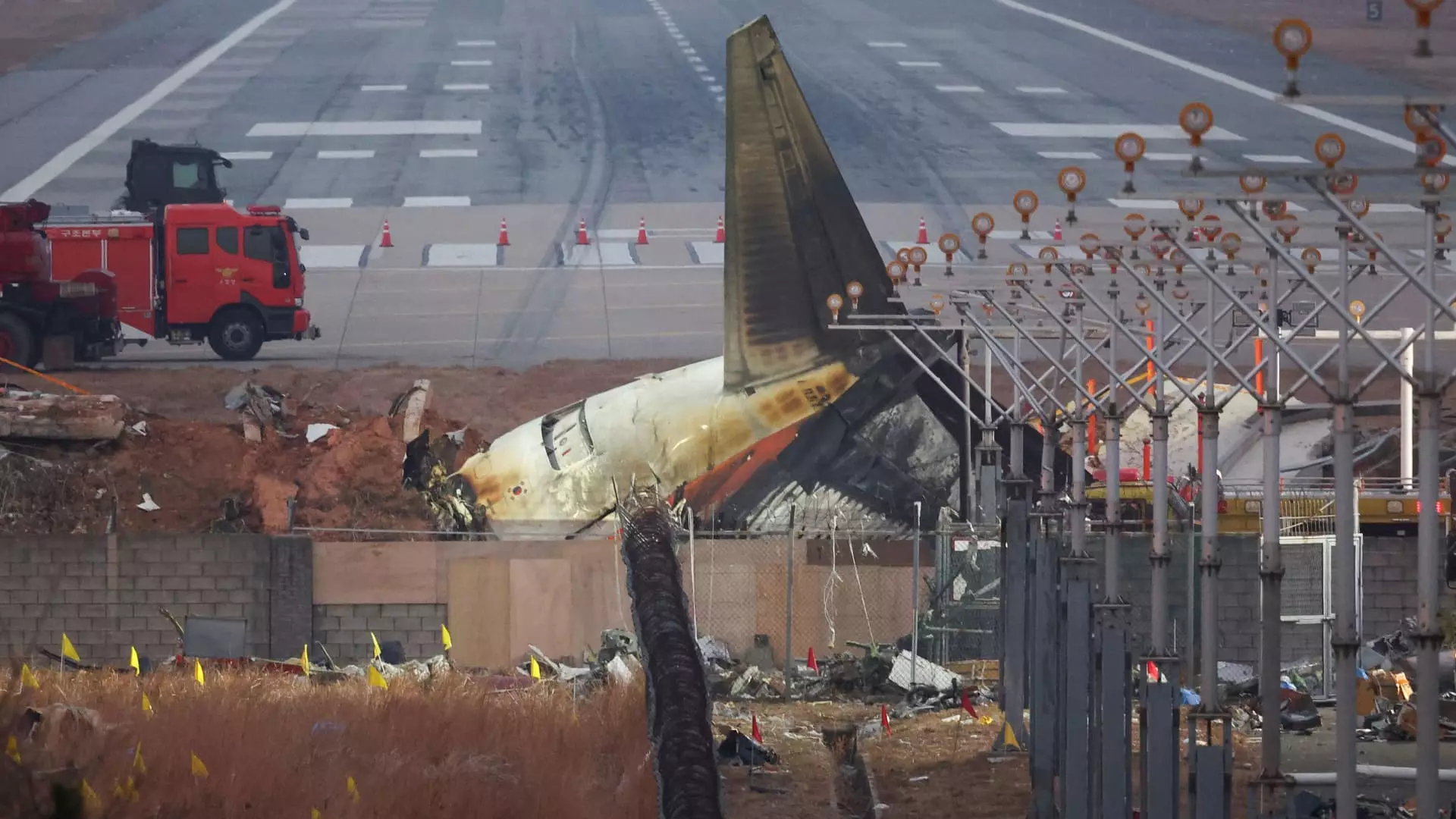In a concerning turn of events for Boeing, shares dropped over 2% following South Korea’s emergency directive to inspect all 737-800 aircraft after a tragic accident involving Jeju Air. This model, prominent in Boeing’s lineup, was at the center of a catastrophic incident that occurred over the weekend, claiming the lives of 179 out of the 181 passengers and crew aboard. The South Korean government, led by Acting President Choi Sang-mok, mandated an urgent safety review across the nation’s aviation sector to assess the potential risks associated with this aircraft model. The Ministry of Land, Infrastructure, and Transport (MOLIT) announced plans for a thorough inspection of the B737-800 fleet, reflecting the urgency of the situation.
The crash took place at Muan International Airport, where the aircraft, as reported, attempted to land without its landing gear deployed. Consequently, the plane skidded off the runway, collided with a concrete wall, and erupted into flames. Disturbingly, only two crew members survived, highlighting the severity of the accident. Early reports mention that the aircraft’s pilot reported a “bird strike” just minutes after the control tower issued a warning regarding bird activity in the area. These details, along with the pilot’s communication of an aborted landing and a distress call, contribute to the growing scrutiny over operational safety protocols.
Ongoing investigations into the incident involve a team led by the U.S. National Transportation Safety Board (NTSB), which includes representatives from the Federal Aviation Administration (FAA) and Boeing itself. Their collaboration aims to assist South Korea’s aviation authorities in determining the underlying causes of this deadly crash. The retrieval of two black boxes from the wreckage—critical for piecing together the final moments of the flight—signals a thorough examination ahead. The involvement of CFM International, the engine manufacturer, underscores the multi-faceted nature of the inquiry, as investigators will delve deep into both airframe and engine performance leading up to the disaster.
In a proactive measure, South Korean authorities are also scrutinizing the concrete wall that the aircraft struck, considering whether safety regulations surrounding airport design contributed to the crash’s catastrophic outcome. With the 737-800 being a long-standing model in Boeing’s fleet, operational for nearly three decades, experts believe that inherent design flaws are unlikely to have played a central role in this tragedy. However, questions regarding maintenance adherence and equipment checks remain pivotal.
Regulatory and Safety Considerations
MOLIT has publicly stated its commitment to reviewing compliance levels on various safety regulations, including maintenance records before and after flights. The authorities are particularly interested in enhancing regulations surrounding bird strikes, an aspect increasingly suspected as a possible cause. The crash has reignited discussions on the safety protocols in place at newly constructed airports, presenting a potential shift in how aviation safety standards are established and monitored moving forward.
Ju Jong-wan, director of the Aviation Policy Office at MOLIT, indicated that the investigation would extend to all facets of operational protocol within Jeju Air. He highlighted the critical need to analyze maintenance history for insights into the disaster. In response to the tragedy, industry stakeholders are left to grapple with the implications of failing systems as the safety of the 737-800 aircraft comes under intense scrutiny.
The repercussions of this accident extend beyond the airline’s operations. Jeju Air’s stock plummeted to an all-time low, reflecting investor concerns and the potential long-term impact on airline operations and passenger confidence. In a show of support for the victims and their families, Jeju Air confirmed that the ill-fated aircraft was insured for a substantial amount, reiterating their commitment to transparency and crisis management. The airline’s management has firmly denied claims that mechanical issues or lapses in safety procedures contributed to the accident, steadfast in their assertion that maintenance protocols were rigorously adhered to.
In the wider aviation landscape, stakeholders are left to ponder the implications of such accidents on public perception and airline profitability. Bob Charles, a noted travel analyst, posited the importance of thorough investigations into maintenance records, emphasizing that any inconsistencies could have significant repercussions on the future operational capabilities of not only Jeju Air but potentially other airlines operating the same aircraft model.
The incident involving the Boeing 737-800 raises critical questions about aviation safety standards and operational protocols. As investigations unfold, the emphasis on preventing future tragedies becomes more paramount than ever. With scrutiny hovering over both regulatory practices and corporate responsibility, the hope is that lessons learned from this disaster will lead to improved safety measures. Only through diligent investigation and an unwavering commitment to passenger safety can the aviation industry reclaim the public trust it often takes for granted.

